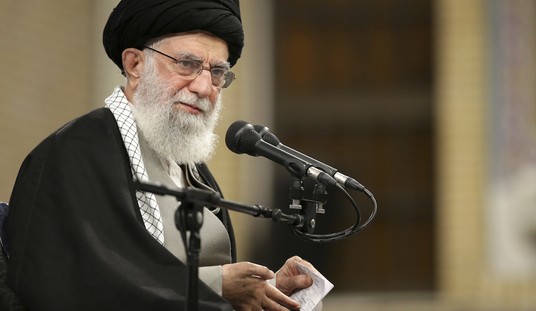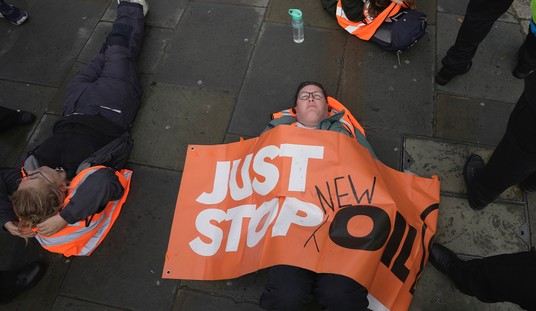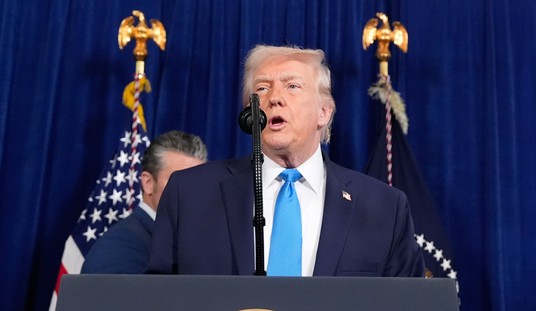House lawmakers on Sunday disputed a new report that concludes Al Qaeda played no role in the fatal 2012 terror attack on the U.S. diplomatic compound in Benghazi, Libya.
The report, published Saturday in The New York Times, found no evidence that Al Qaeda or other international terrorist groups had a role in the assault that killed four Americans on Sept. 11, 2012, and stated the attack appeared largely fueled by anger over an American-made anti-Islamic video, as the Obama administration first claimed.
“I dispute that, and the intelligence community, to a large volume, disputes that,” Michigan GOP Rep. Mike Rogers, chairman of the House Intelligence Committee, told “Fox News Sunday.”
But a New York Times report published over the weekend has angered sources who were on the ground that night. Those sources, who continue to face threats of losing their jobs, sharply challenged the Times’ findings that there was no involvement from Al Qaeda or any other international terror group and that an anti-Islam film played a role in inciting the initial wave of attacks.
“It was a coordinated attack. It is completely false to say anything else. … It is completely a lie,” one witness to the attack told Fox News.
[T]here is abundant open-source reporting that contradicts Kirkpatrick’s sweeping claim about “no evidence that Al Qaeda or other international terrorist groups had any role in the assault.” And most problematic for this revisionist account, some of that evidence comes from the Times itself in a story the paper published on October 29, 2012.
That story, like this latest one, was a major front-page investigative piece. It reported that “American officials” said the Benghazi attacks “included participants from Ansar al Shariah, al Qaeda in the Islamic Maghreb and the Muhammad Jamal network, a militant group in Egypt.” So according to previous reporting in the Times, the Benghazi attacks included participants from the main al Qaeda affiliate in Libya and a terrorist network in Egypt, and, contrary to Kirkpatrick’s assertion, evidence that both al Qaeda and other international terrorist groups played some role in the assault. Kirkpatrick was presumably aware of that earlier report, since he was credited with contributing reporting from Benghazi.
Jamal was trained by al Qaeda in the late 1980s, and has been loyal to Ayman al Zawahiri since at least the 1990s. He served as a commander in the Egyptian Islamic Jihad (EIJ), a terrorist group headed by Zawahiri that merged with bin Laden’s enterprise. Jamal left prison in 2011 and quickly got back to work.
The Egyptian press has published some of Jamal’s letters to Zawahiri. In the letters, which were written in 2011 and 2012, Jamal is extremely deferential to Zawahiri. Jamal heaps praise on Zawahiri, seeking the al Qaeda master’s guidance and additional support. Jamal even mentions that he attempted to visit Zawahiri in person, but failed to do so because of restrictions on his travel. So, Jamal writes, he sent an emissary instead.
Jamal’s letters read like status reports. He writes that he has received financing from al Qaeda in the Arabian Peninsula (AQAP), but requires additional funds to purchase more weaponry. Jamal also explains that he had formed “groups for us inside Sinai” and had established “an advanced base outside Egypt in Libya to take advantage of the conditions in Libya after the revolution.”
Jamal’s operations inside the Sinai and Libya included training camps. Some of the trainees from those camps took part in the Benghazi attack.
The report’s second conclusion — that the attacks were inspired by a video is thin to nonexistent. I have talked with individuals present at the riots in Cairo. They will tell you that the Cairo attacks weren’t even inspired by the video, but by extremists who cared more about the Blind Sheikh than any video. More evidence exists that the attack in Benghazi was premeditated and that the timing was driven by the ambassador’s presence in Benghazi, not by external events.
The report misses the main take-away from Benghazi: The State Department totally misread the threat environment in Benghazi on September 11. The State Department believed that it could engage with radical militias. This is consistent with the State Department’s belief that it could engage constructively with the Taliban in Afghanistan, the Muslim Brotherhood in Egypt, and the extremist regime in Iran. That assumption is just plain wrong. You cannot engage with these extremist elements and expect to influence their behavior.
The article identified Islamic militia leader Abu Khattala as the ringleader in the attack. Not one sentence in the article explained why the administration allows Khattala to strut freely around Benghazi today. President Obama authorizes drone strikes to kill dozens of Islamists each year. Why is Khattala off-limits? That is the real story…
But how many degrees of separation did the NYT count before concluding, “No Qaeda Link Seen?” As extreme, violent Islam has migrated across North Africa, it has attracted many diverse and loosely affiliated militias and gangs. Most seek local or regional power, but are not (yet) a threat to direct American interests. It is up to the administration to decide how to deal with them on a case-by-case basis. We are doing this by strikes in Yemen, Pakistan, and Somalia. Why is Khattala a subject of interest to the New York Times, but not an object to be dealt with by the CIA?
Rep. Lynn Westmoreland (R-Ga.) described the newspaper report as “totally unsatisfactory and completely false” after it turned up no evidence that al Qaeda, or other “international terrorist groups,” was involved in the attack last year that killed four Americans, including U.S. Ambassador Christopher Stevens…
“The reports by the New York Times was — I don’t know why they put it out unless it was for political reasons, but we thoroughly dispute that story as far as the link to al Qaeda,” he said Monday on Fox News.
“Of course Secretary Clinton was in charge at the time, and you know there are just now a lot of rumors going and pushing about her running for president in 2016,” he said. “So I think they are already laying the groundwork.”
Kirkpatrick’s claim that the Benghazi attack “was fueled in large part by anger” at the video about Islam seems to rest primarily on what Libyans told him after the fact. These sources can’t entirely be discounted, of course. However, it is surely self-serving for Libyans, almost regardless of their persuasion, to blame the attack on external events, and especially anti-Islamism, rather than on the bloodthirsty extremism of the Libyan attackers themselves.
Kirkpatrick’s heavy reliance on self-serving comments by Libyans that also serve the purposes of Hillary Clinton, Susan Rice, etc, suggests that he had a story he wanted to write and was looking for confirmation of that story.
For anyone wondering why it’s so important to Republicans that Al Qaeda orchestrated the attack — or how the Obama administration described the attack in its immediate aftermath — the answer is simple. The Republicans hope to tarnish Democratic candidates by making it seem as though Mr. Obama doesn’t take Al Qaeda seriously. They also want to throw mud at former Secretary of State Hillary Clinton, who they fear will run for president in 2016.
Which brings us to one particularly hilarious theme in the response to the Times investigation. According to Mr. Rogers, the article was intended to “clear the deck” for Mrs. Clinton’s presidential campaign. Rep. Lynn Westmoreland of Georgia, a member of the House Intelligence Committee, said today that The Times was “already laying the groundwork” for a Clinton campaign. Other Republicans referred to Mrs. Clinton as our “candidate of choice.”
Since I will have more to say about which candidate we will endorse in 2016 than any other editor at the Times, let me be clear: We have not chosen Mrs. Clinton. We have not chosen anyone.
While some have cast the story as helpful to Hillary Clinton and the administration, it actually amplifies some of their key failures. It’s pathetic that we failed to heed ample warning signs, including attacks on our own compound. It’s pathetic that we provided such inadequate American security that a small group of attackers were able to breach the gates with ease (It’s telling that the few Americans actually had to run to grab their weapons; they weren’t already armed). It’s pathetic that they had no help under fire. It’s pathetic that one reason why they had no help is that we placed American lives under the protection of Libyan militias. The greenest platoon leader in my regiment in Iraq could have (and would have) devised a better defense. And it’s especially pathetic that Western journalists keep interviewing the prime suspects while our own government either cannot or (more likely) will not do what it takes to bring them to justice.
A sealed indictment? Our enemies tremble in fear.
The Times clearly sought to put a stamp of finality on the Benghazi debate. But if the goal was to prove that al Qaeda wasn’t involved, basic logic suggests this was a tall order. As the astronomer Carl Sagan once put it, “Absence of evidence is not evidence of absence” (a quote, incidentally, favored by former Defense Secretary Donald Rumsfeld in the context of Iraq’s weapons of mass destruction). Even if the Times is right, and even if the U.S. intelligence community formally dismisses the idea that al Qaeda planned the attack, there will always be some who wonder if we simply haven’t looked hard enough.
And on the debate will go. Vast amounts of ink have already been spilled about the Benghazi tragedy, and vast amounts will doubtless be spilled in the weeks and months ahead. What we’re not likely to argue much about: Libya itself, a deeply troubled country that Americans once thought was important enough to liberate—and then, scarred by a mysterious attack, left to its fate.








Join the conversation as a VIP Member